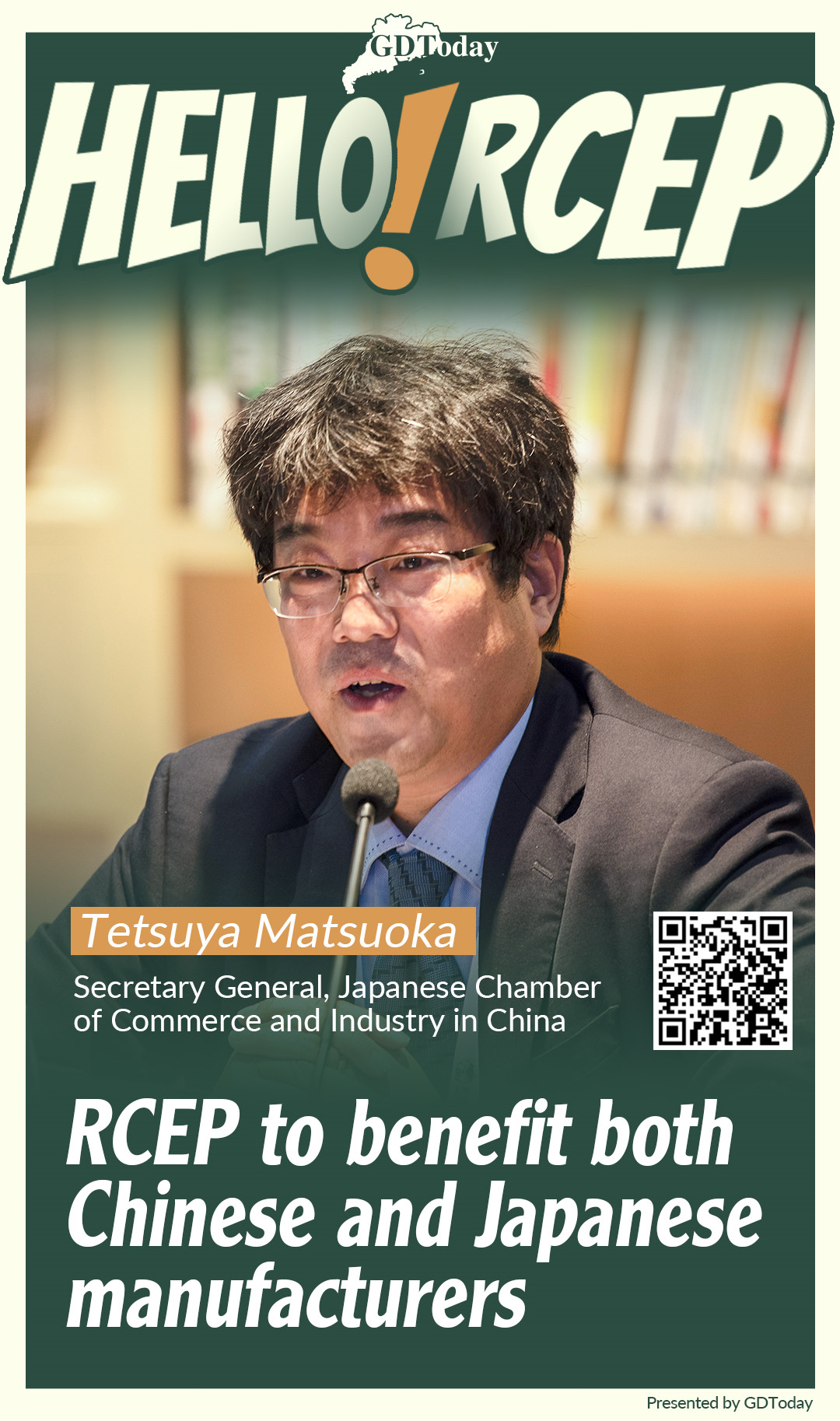Editor’s note: the Regional Comprehensive Economic Partnership agreement (RCEP) will come into effect on Jan 1, 2022. How will the RCEP benefit the trade partnership in the region? How are companies planning to seize this opportunity? More insight could be found in “Hello! RCEP” presented by GDToday.
Tetsuya Matsuoka, Secretary General of Japanese Chamber of Commerce and Industry in China (JCCI), considered the RCEP very important to both Japan and China, and the JCCI highly anticipated its implementation.
“Although Japan already has the Japan-EU Economic Partnership Agreement and is negotiating with China and South Korea on a Free Trade Agreement, the RCEP covers a broader region including China, Japan, South Korea, the ASEAN countries, Australia and New Zealand, making the whole region one market. It’s also expected to improve our trade relations with China,” said Tetsuya Matsuoka.
More than 90 percent of the trade in goods in the region will be tariff free once the RCEP comes into effect. Also, the RCEP and other existing free trade agreements are complementary and mutually reinforcing.
“As many Japanese companies have factories in China and Southeast Asia, the RCEP will enable them to manufacture products much more easily in this region. For example, they import parts from Japan, Vietnam and Malaysia to China and assemble products here. Then, they sell in the Chinese market or export to the Australian market. The RCEP will help them lower prices and make cross-border trade convenient,” Matsuoka explained.
As for tax reduction on products included in the RCEP and other free trade zones, the manufacturers have to gradually adopt the regional trade partnership's Cumulative Rules of Origin to enjoy more preferential duty. If the RCEP tariff concession commitments grant tax reductions at the national level, the Cumulative Rules of Origin is used as a guideline that enterprises can follow to enjoy preferential duties.
In addition, Matsuoka said the RCEP would be beneficial to China as well. “China is an advanced country in terms of technologies such as electric vehicles and autonomous driving. These advanced technologies and know-how could access to other countries more easily with the RCEP,” he said, “Guangzhou has the potential from this sense because a large number of factories are located in this city.”
According to the JCCI, the number of Japanese enterprises in China has been increasing from 23 thousand in 2012 to 33 thousand in 2019. Japan is the fourth biggest trading partner of China following ASEAN countries, the EU and the US while China has been Japan’s biggest trade partner since 2007. The trade volume between two countries was more than USD 317.5 billion among which the export volume of China hit USD 142.6 billion while the import volume reached USD 174.8 billion.

Author: Jasmine
Video: Axin, Keane
Photo: Steven
Graphic Design: Mia
Editor: Wing, Keane, Jerry




